Content

Product filters are a crucial element of any successful eCommerce website, directly influencing both user experience and SEO performance. Well-structured and easy-to-use category filters help shoppers quickly find what they need, which boosts engagement and increases conversions. Surprisingly, to know that only 16% of eCommerce websites offer an effective product filtering system that truly enhances the shopping journey.
For online stores with a large inventory and numerous SKUs, implementing a robust filtering system is essential. A smart eCommerce filtering system improves site navigation, reduces bounce rates, and supports SEO by organizing products into searchable categories. In this article, we’ll explore the best UX practices for product filters in eCommerce and show how to optimize your filtering system to maximize sales and search rankings. But first, let’s cover some foundational concepts about product filters and why they matter.
eCommerce filters are used to facilitate the user’s experience and make product search much accurate and easier.
Multiple filters are essential for any online shop with many items.
Filters have to be as specific and relevant. Based on the type of products you offer, you need to implement and maintain the filters that meet all your user’s search queries. Color, size, price, brand rating, and other category-specific filters just to name a few.
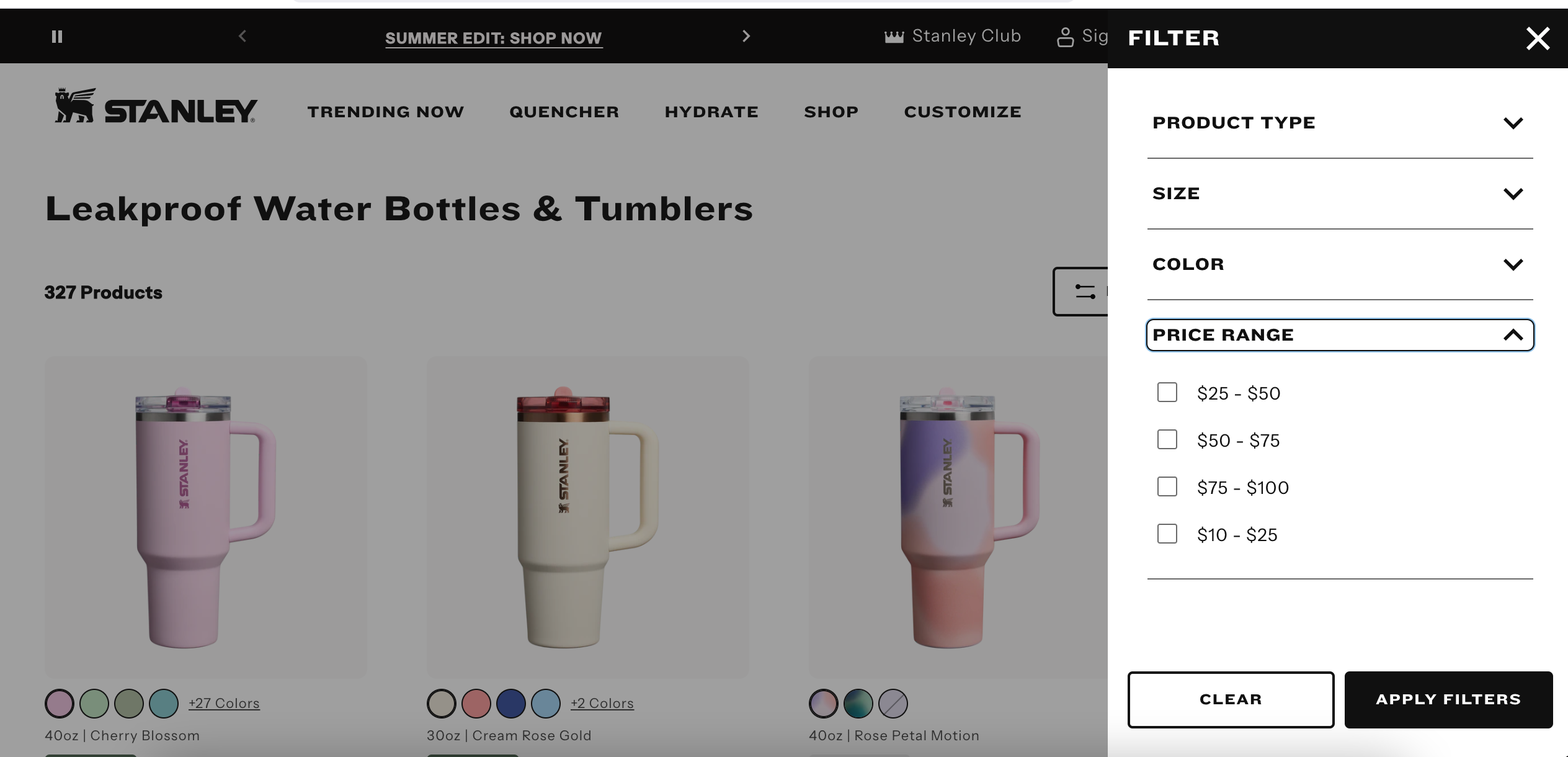
Just implementing product filters to your website may increase the conversion rate by 26%. Along with that, only a small percentage of companies offer good filtering options. Therefore, this is your chance to stand out from the competition and deliver the best user experience.
Filters also work great for search engine optimization. If users are able to navigate your website with easily and quickly with SEO filters, then Google will notice this and rank accordingly. As a result, better visibility in the search results is guaranteed, and new users are more likely to see and visit your eCommerce store.
If your online store sells just a few products, you can opt for basic filtering. However, the more range of products you offer, the more filters you should provide for easy navigation on your website. Filters are a great chance to introduce a variety of products, gain a broader audience, and drive more sales.
According to industry research, implementing advanced product filters can increase conversion rates by 26–40% and significantly reduce bounce rates. This makes filtering not just a convenience feature, but a powerful business tool.
Search filters enhance both the user experience and site performance, especially on mobile devices where quick access to relevant results is key. In addition to boosting usability, advanced filters also bring clear SEO benefits — filterable category pages can be indexed by Google, which improves organic visibility and rankings. Together, these advantages lead to a measurable uplift in ROI.
Here are the core benefits of advanced eCommerce filtering:
In short, advanced filters do more than organize products — they boost performance across your entire eCommerce funnel.
There are many types of eCommerce filters — by category, product attributes, price range, brand, user ratings, and more. The key is to select filter types that match the search behavior and expectations of your target audience. For example, a fashion store should prioritize filters like size, color, and material, while an electronics store needs specs like screen size, memory, or processor type.
Category-specific filters are especially important because they help users drill down quickly to exactly what they need within large product catalogs. Without relevant filtering, users may feel overwhelmed or leave your site altogether.
No matter what you sell, there are a few universal filters that most online stores should implement to improve usability and boost conversions:
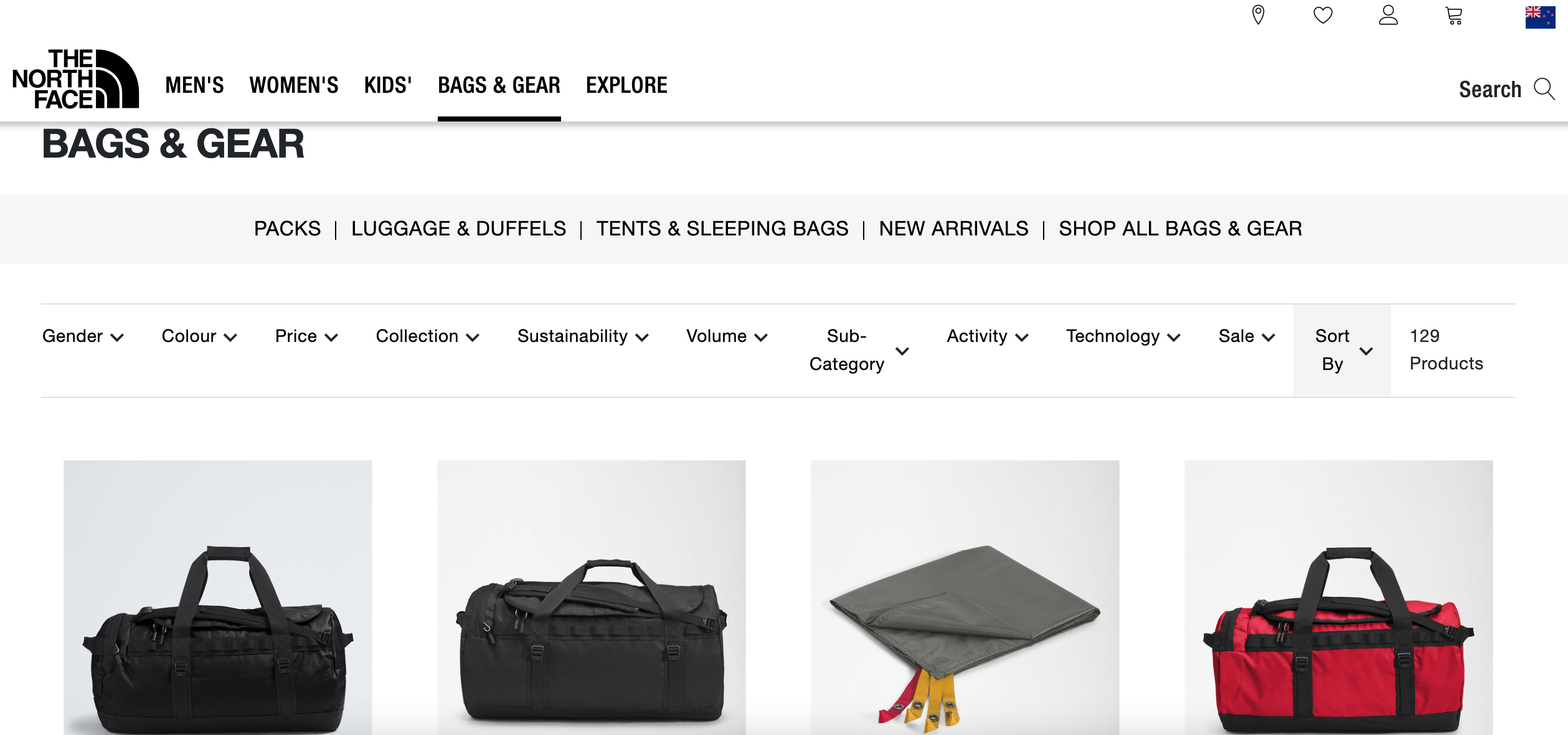
The category-specific filters are used to sort the products by attributes appropriate for a specific category.
Let’s say you have an online baby shop with a wide range of products. You can sort items by color, size or gender in the “Bodysuits & Sleepsuits” category, but these filters will look odd in the “Baby Lotions” category. Instead, you can sort lotions by ingredients. At the same time, brand filters may provide comfortable navigation in both categories.
If you think this is a nude fact, here is a quick statistic. 42% of large ecommerce websites DO NOT use category-specific filters. If your key competitors are on this list, you have an easy opportunity to get ahead of them.
Back to the baby shops. We found an excellent example of category-specific filters which could be determinative for parents on the Simplebaby.com website.

It’s also important to provide customers with an opportunity to choose multiple filters at the same time to make the search results even more accurate. Otherwise, your customers will have to waste time scrolling dozens of pages to find what they are looking for. Note that if your filter list is too long this may also distract the customers’ attention.
Please, make sure that filtering results appear fast. Even if you have perfect filtering options, it won’t matter if a user has to wait too long for the results to appear on screen. Running speed tests is imperative to provide an impeccable user experience.
We wouldn’t recommend limiting yourself with only basic filtering options. You can easily come up with unconventional thematic filters that may be even more useful for your customers.
According to the statics, 20% of leading eCommerce website ignore these product filters.
How can you create these? The first way is to analyze similar queries for your product keywords. Let’s say that you sell microphones. Besides the type filters such as “handheld’, “lavalier” or “USB”, and the capsule type filters such as “dynamic” or “tube” you can add filters based on an occasion. These may be “conference microphones”, “vocal microphones”, “video camera microphones”, “iPhone microphones” and so on. The products may intersect between categories, and it’s even better than good.
This filtering approach allows your customers, who may be ignorant of the technical characteristics, to choose the right item faster. Consequently, you shorten their decision-making process.
H&M has another solution for thematic filters. They use special sorting features to enhance product value and promote their brand storytelling on every category page.
Thus, they added three types of filters: Conscious Products Explained, Recycle at H&M, H&M Take Care.

This approach works well not only on retail websites, but also on online booking services.
Besides numerous genius marketing features at Booking.com, which we will discuss in one of our next articles, they also provide additional property value with the help of thematic filtering parameters.
Along with common filters that allow you to choose a type of apartments and the number of rooms, users may also narrow down the search depending on location score, fun things to do near, and so on.

AI‑powered smart filters use machine learning, natural language processing, and real-time behavioral data to adapt filtering options dynamically based on each shopper's intent, past behavior, and context. These filters can interpret natural language queries (e.g., “affordable leather jackets”), surface preferred attributes first, and get smarter over time by learning what users click and buy. Unlike static filter lists, AI smart filters prioritize relevance and personalization in real time, making product discovery faster and more accurate.
There are several ways to implement these smart filters:
AI-powered search and personalization are among the top eCommerce technologies in 2025, helping retailers improve engagement, lift conversions, and boost retention. Retailers using these tools report measurable gains in revenue.McKinsey-backed studies show personalization can deliver up to 40% revenue increase, with some retailers seeing as much as 800% ROI from smarter product discovery flows.
Walmart recently decided to go further than just AI filters, and launched an AI superagent, that will take over the shopping experience. It helps find the right product, works with voice search and much more:
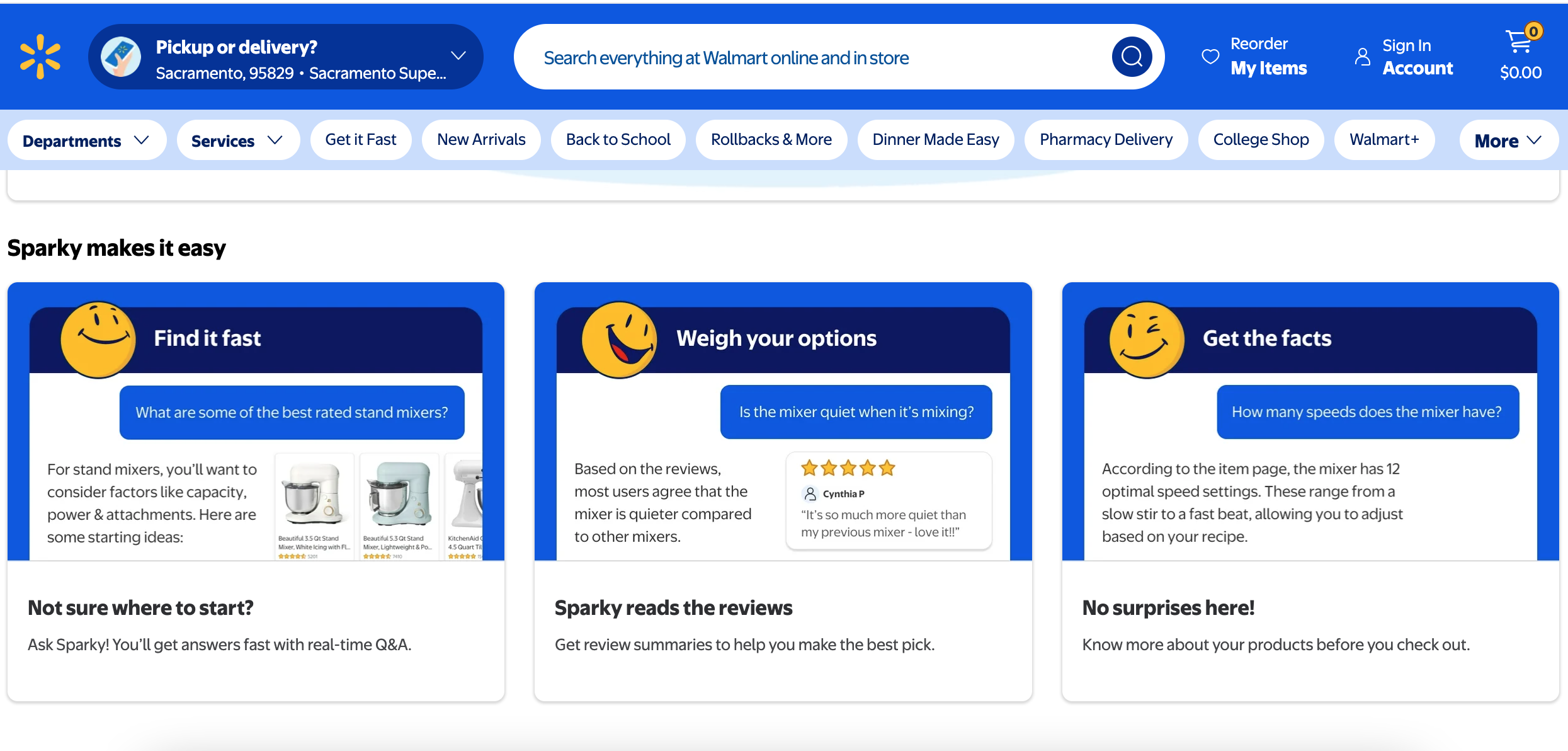
To get the most out of product filters, it’s not enough to simply add them — you need to follow proven best practices that enhance both usability and performance.
Use simple, user-friendly names that match your customers’ vocabulary — for instance, say “Price range” instead of “Monetary filter.” Always allow multiple filter selections within a category (e.g. selecting both “Nike” and “Adidas”) to avoid frustrating users and limiting their choices. This flexibility improves engagement and helps users find relevant products faster.
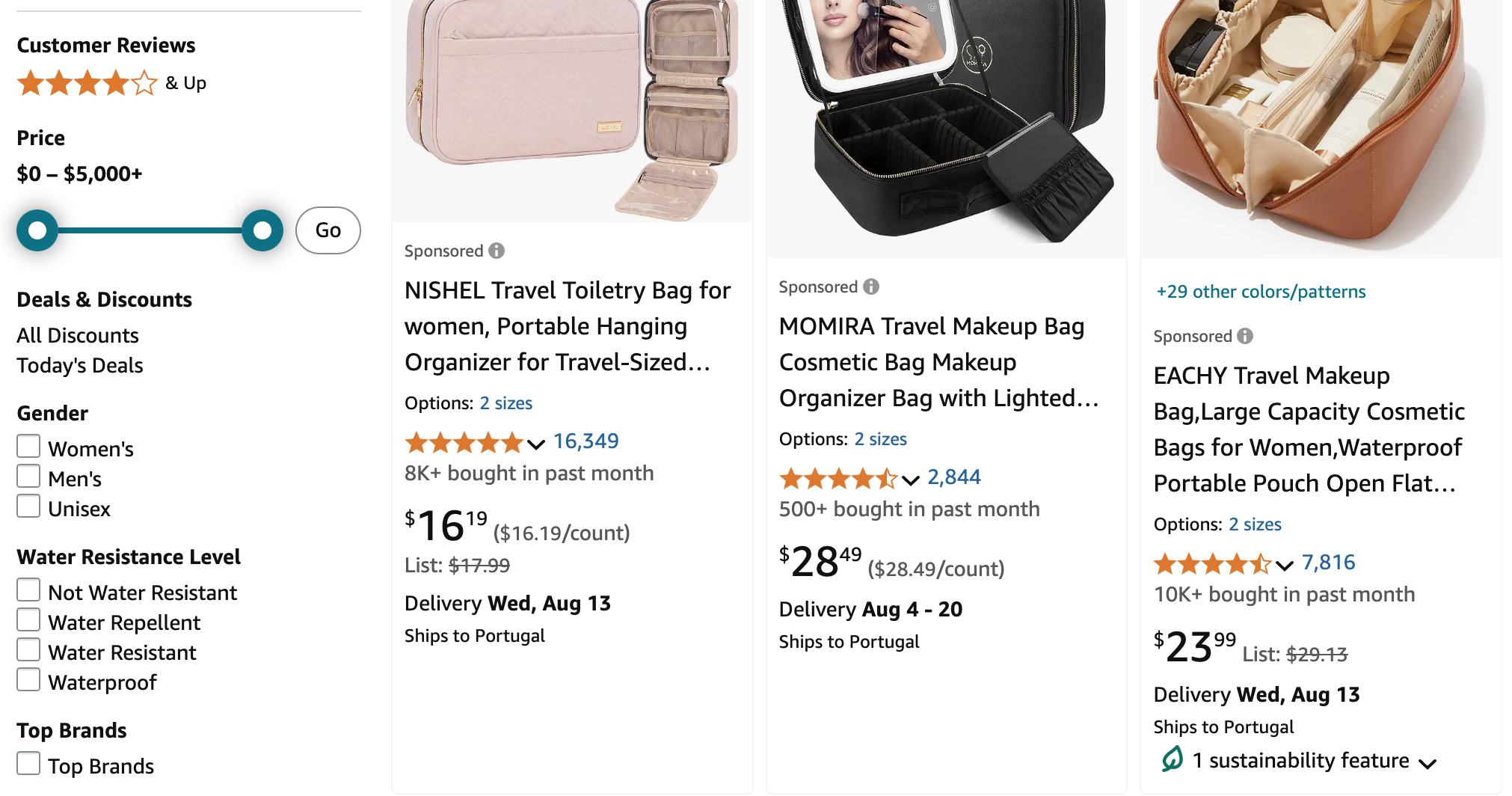
Filters should be easy to find and intuitive to use. On desktop, place them in a left-hand sidebar or top bar; on mobile, use expandable menus or sticky filter buttons. Stick to a clean layout with visible, scrollable options. For example, fashion retailers often highlight “Size” or “Color” filters first based on user intent, while electronics stores prioritize “Brand” or “Specifications.”
When it comes to filtering design, basically, there are two common options for eCommerce websites. You can opt for a traditional sidebar menu or go for a horizontal filtering design that has become a real trend over the past few years. What is more, you can combine these two approaches to deliver your customers the greatest experience when using your eCommerce store.
24% of eCommerce websites have ditched the traditional filtering sidebar in favor of a combined horizontal filtering and sorting tool since consumers tend to overlook it.
However, despite its efficiency, horizontal filtering has a major drawback. You have a limited space to put the most relevant and popular filters because you can use only the width of the screen. It could be quite challenging in terms of UX/UI adjustments but the results are worth it.
Johnlewis.com has solved this design issue with the help of icons, avoiding the drop-down filtering menu. In our opinion, the solution looks clear and informative.

When the testing shows displaying applied filters both in the original positions in a sidebar and in the top of the filtering list, this can improve the customer experience. First of all, because this is more convenient for users to find and discard an applied filtering parameter.
However, the research showed 42% of eCommerce websites don’t bring applied filters to the top.
Some websites use pre-applied filters. To illustrate, we review the Johnlewis approach. The first time you visit their category page, you notice that 7 parameters have been already chosen. With the help of applied in advance attributes, they solve the merchandising issue and prioritize specific products they need to sell.
The thoughtful design allows discarding any filter since they are arranged on top, or add a new one.

An SEO-friendly filter setup allows search engines to crawl and index valuable filtered pages without creating duplicate content or wasting crawl budget. The key is to ensure that filtered URLs are clean, descriptive, and follow a consistent structure. For example, instead of a messy dynamic URL like
example.com/products?cat=12&color=red&price=lowuse a readable path such as
example.com/shoes/red/under-100.
This helps Google understand the content and improves the chances of ranking for long-tail, high-intent queries like “red running shoes under $100.”
At the same time, you should avoid indexing every possible filter combination, as it can lead to thousands of low-value pages. Focus on indexing only meaningful combinations — such as popular categories with high search demand — and use robots.txt or canonical tags to prevent duplicate content. Pairing filters with static category pages, proper internal linking, and schema markup also boosts SEO performance and ensures your filtering system adds value for both users and search engines.
By 2025, voice search has become mainstream in the U.S., thanks to major advances in natural language processing. Shoppers now speak naturally—“Show me red dresses under $100 for a wedding”—and get accurate, personalized results via Alexa, Google Assistant, or Siri. Retailers like Walmart and Starbucks have already seen major returns from voice ordering, with voice commerce expected to hit $81.8 billion globally by 2025. Multilingual support, especially Spanish, plays a key role in adoption. Successful integration requires smart backend systems that understand user intent and respond in real time across devices.
For eCommerce filters, this shift means rethinking how filters work behind the scenes. Instead of users manually selecting "color: red" or "price: under $100", filters must now respond dynamically to voice inputs, parsing intent and applying the right combinations automatically. To stay competitive, retailers need voice-compatible filters that translate natural language into structured, SEO-friendly queries—turning every spoken request into a smooth, personalized product discovery experience.
A data-driven approach is essential for optimizing your eCommerce filters. Instead of guessing, use analytics and A/B testing to evaluate which filter types, placements, and logic deliver the best results. Track key metrics such as conversion rate, click-through rate (CTR), average session duration, and bounce rate to understand user behavior and make informed decisions. Tools like Google Analytics, Hotjar, and Optimizely allow you to run experiments and visualize performance differences.
To fine-tune filters, analyze which filter categories are used most often—look at filter usage reports and segment them by device or product category. Use heatmaps (e.g., from Hotjar) to understand how users interact with your filters, where they drop off, and which elements attract the most attention. Visualizing this data with bar graphs or funnel charts makes patterns easier to spot. Set clear KPIs like “filter usage to conversion rate ratio” or “time to product view after applying filters.” Also, don’t forget about seasonal optimization—update filters for holidays or seasonal shifts (e.g., size filters for winter clothing, color filters for Valentine’s Day).
One common issue is analysis paralysis—when users are overwhelmed by too many filter options, leading to indecision or site abandonment. Keep filters focused and relevant. Speed is also critical: filters should load results instantly without lag, especially on mobile, where slow interactions kill engagement. Always display active filters clearly and provide one-click removal to maintain user control.
On mobile, avoid typical usability issues like tiny touch targets, non-sticky filter buttons, or complicated dropdowns. From an SEO perspective, be cautious: poorly implemented filters can create thousands of low-value URLs or duplicate content. Prevent this by using canonical tags, noindex directives, and allowing indexing only for high-value filter combinations.
✅ Define filtering goals (UX, SEO, conversions)
✅ Track performance in Google Analytics
✅ Use A/B testing tools like Optimizely
✅ Set KPIs (e.g., conversion rate with filters, filter interaction rate)
✅ Review filter usage reports
✅ Analyze behavior with Hotjar heatmaps & session recordings
✅ Optimize mobile filter UI (size, speed, clarity)
✅ Add/remodel filters seasonally
✅ Prevent SEO issues (URL structure, canonicals, duplicate content)
✅ Regularly update and clean unused or low-impact filters
The importance of implementation and management of quality SEO and category filters is unquestionable. Well-thought-out filters can skyrocket your eCommerce business results.
If you want your well-running business to thrive in the eCommerce sector, having a good filtering system on the website is essential. Start implementing filter UX patterns in your eCommerce store to gain more loyal customers and higher revenue. Don’t be afraid of experimenting with product categories and make sure to keep an eye on the latest trends and best practices.
Or just reach out to us. See what we've done for our clients:
[[ROW-START]]
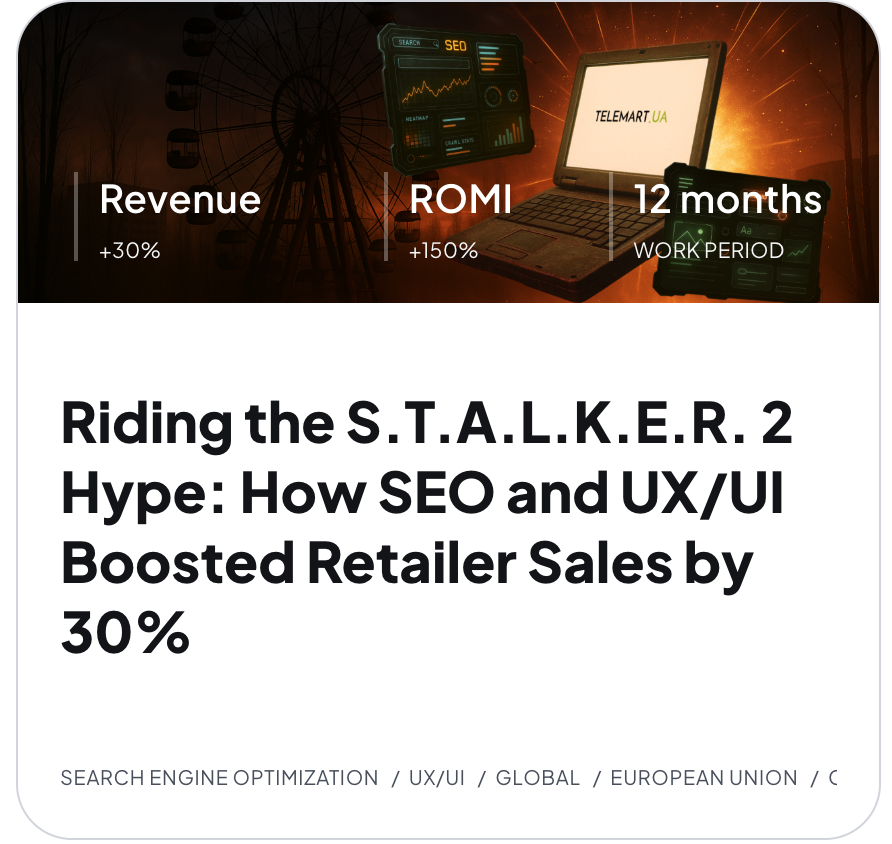

[[ROW-END]]
Would you like similar or better results? Contact us.
You may also like
Choose quality and trusted services to improve the presence of your company on the Internet, and feel free to contact our UK team if you have any questions.

In 2025, paid search marketing dominates driving 57.5% of revenue. Grab the latest on eCommerce marketing benchmarks by Promodo marketers.
.avif)
Implementing SEO strategies can drive organic growth and propel your fintech business to new heights in the digital landscape.

A well-crafted medical device marketing strategy is crucial to promoting your medical devices and remaining ahead of the competition.

One of the best ways to do this is by connecting your Shopify store with Facebook and Instagram.
We at Promodo are ready to help you improve your performance across all digital marketing channels.
Get started
